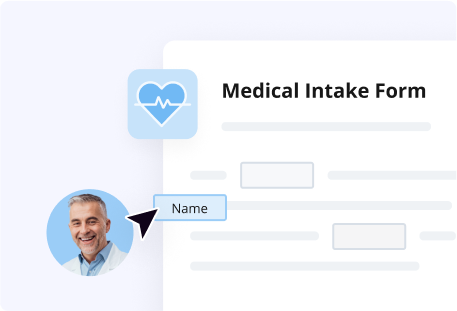Type any topic that interests you
Unlock the ins and outs of automating patient intake flow chart for doctor with training course

About this program
After completing this program, you’ll be able to take your practice to another level by reducing your time spent on inefficient manual information collection, enhancing the experiences of your patients, and minimizing risks of data breaches and non-compliance with HIPAA legal frameworks.
What’s included in the training course:
- Classes highlighting all aspects of streamlining patient intake Unlock the ins and outs of automating patient intake flow chart for doctor with training course for doctor with airSlate.
- Quiz maintaining your learning momentum moving.
- A badge showing your progress and results in training course by airSlate Academy.
What will you get?
- An in-depth walkthrough of steps to design your Flow from A to Z with our training course.
- The best methods of putting together your patient intake Unlock the ins and outs of automating patient intake flow chart for doctor with training course for doctor flow.
- A guide on how to integrate with some available services and systems of record.
- Insightful pieces of advice for operating your Flow more efficiently.
Who can take advantage of this training course?
- Medical employees interacting with patients and handling doctor regularly.
- Administration and support managers involved in handling patient intake Unlock the ins and outs of automating patient intake flow chart for doctor with training course.
- IT managers maintaining the tech system of healthcare organizations.
More courses you might like
What our students say
Start learning today
Sign now for free
Questions & answers
Medical workers are challenged with numerous issues when dealing with paper-centered patient intake or flow chart produced by unreliable features. These include Illegible handwriting, mistake-prone data handling, ineffective wet-signature collection, and compliance concerns. Dodge these inefficiencies by engaging an automated patient intake flow chart that you can build and configure quickly with airSlate.
The airSlate Academy offers a wide range of free training course options. And our course on patient intake flow chart Flow for doctor is one of them. To see a complete list of courses, visit airSlate Academy’s main page. Please keep in mind that you can take as much courses as you want.
You can use various tools and resources to create your patient intake flow chart, such as online templates, healthcare software, and document creation programs. The process typically entails determining vital information that needs to be collected from the patient, creating a form, and testing it to ensure it is user-friendly and easy to complete. A wide variety of training course options online will help you enhance this process and make it as time and effort-saving as possible.
At airSlate, a Flow (in our case patient intake flow chart Flow for doctor) means a procedure encompassing a set of file templates and fillable forms. They can be automated and personalized using pre-established rules. Flow automation tools help companies decrease manual workload and simplify repetitive processes.
Typical bottlenecks of the patient intake process are manual data entry in flow chart, long wait times, and the risks of losing or misplacing patient documents. Automation will let address these problems by digitizing patient intake operations, automating routine tasks including filling out personal data and medical history forms for doctor care, and storing patient data electronically, which can improve precision, minimize waiting time, and enhance document encryption.
The objective of patient intake flow chart is to request and deal with essential information, usually at the first point of interaction with a patient. This data usually includes demographic data, medical history, insurance information, and other information that can help healthcare workers make certain that the patients obtain excellent treatment. By gathering this information, medical care providers can simplify the care process and make sure patients get the best possible care.












